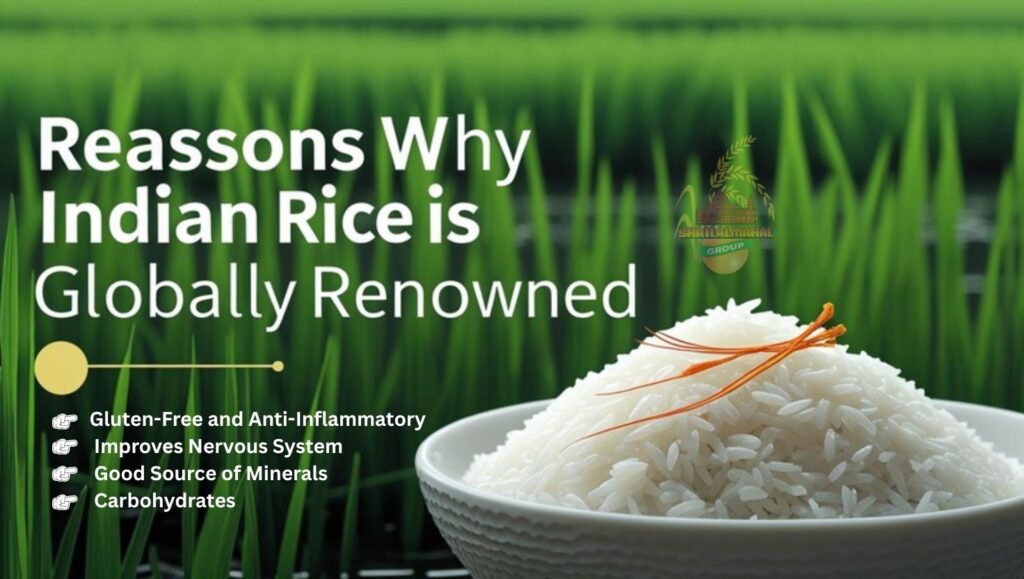Rice is a staple food for billions of people across the world and holds a special position in the global market. India, being one of the largest producers of rice, is also the largest exporter of rice and enjoys a unique advantage in providing the best basmati rice across the world. Indian rice remains globally renowned despite of India Rice Exports Ban, which was imposed on July 20, 2023; however later it was lifted on September 28, 2024.
This blog by Shri Lal Mahal, one of the leading exporters of rice will help you find out why Indian rice remains globally renowned despite government curbs and policies.
Why did the Indian Govt. Ban Rice Exports in India?
Factors such as potential El Niño-related droughts that was impacting harvest, increasing domestic rice prices, and to ensure food security govt. decided to ban rice exports in India. For the unversed, the ban of non-basmati white rice doesn’t mean that basmati rice export ban was also imposed during this period. Basmati rice exports continued with some restrictions like Minimum Exports Price (MEP). The ban in July 2023 was aimed at preventing a surge in prices and ensure adequate rice availability for the domestic market.
India Rice Exports Ban: History and its Global Impact
India is globally famous for a wide range of things, ranging from a rich cultural heritage to its mouthwatering delicacies. India is not famous only for its vibrant culture and delicious foods, but it is also famous for exporting the rice that the country cultivates every year. However, the export of rice came to a halt when Indian Government on 20th July 2023 imposed a ban on non-basmati white rice due to rising domestic prices and concerns related to food security.
India Rice export ban disrupted global rice markets leading to increase in prices of rice in several importing nations. Nepal, Bangladesh, and various African nations were deeply affected with this ban as they rely high on Indian rice supplies. Despite this ban the mouthwatering delicacies of Indian basmati and non-basmati rice overruled the foreign hearts and remained in high demand. Let us find out the reasons why Indian rice market holds the crown in global trade.

Reasons why Indian Rice is Globally Renowned
Indian basmati rice is treasured globally for its distinct long grains, appealing aroma, and unique taste. It is the most sought-after variety of rice across the globe. It was the appealing taste and aroma that made a special place in foreign hearts despite the rice export ban. Basmati rice is mainly grown in the Himalayan region; however, its fame goes beyond borders. Non-basmati rice export ban was affecting people as several variants of non-basmati rice such as Sona Masoori Rice, PR 11 and Sugandha rice are commonly exported and is popular among a large group of people. Apart from being the best in taste these rice variants are also preferred due to their health benefits. Let us explore the several health benefits that basmati and non-basmati rice offers:
- Gluten- Free and Anti-Inflammatory: Several variants of non-basmati rice are usually gluten free, which is helpful for people who are allergic to gluten protein but is normally found in wheat, rye, rice and grains. Gluten-free Indian non-basmati rice improves your health and maintains the energy of your body.
- Improves Nervous System: Indian non-basmati rice is the rich source of Vitamin B, which is a vital source for improving our nervous system.
- Good Source of Minerals: Non-basmati is a rich source of minerals like potassium, magnesium, calcium, and iron. Consumption of minerals boost immunity system and makes it strong to prevent diseases and serious health related problems.
- Carbohydrates: India rice export ban 2023 not only deprived people of mouthwatering rice delicacies but also of the health benefits that rice offers. Indian non-basmati rice contains a high amount of fibre, and consuming a cup of cooked rice daily ensures that your body gets almost forty-one grams of carbohydrate. Further, they also control blood pressure.
Key Factors That Contribute to India’s Leading Position in the Global Market
The demand for Indian rice increased abruptly after the rice export ban was lifted in 2024. This further proved that India’s dominance in the global market is unbeatable. But what exactly are the factors that make Indian rice so appealing? Is it the taste, the price, the aroma, or the perfect blend of all these? Let us dig deeper into this topic to find out the reasons behind India leading the global rice market.
- India enjoys a unique advantage due to its diverse climatic conditions. It has both tropical southern regions that help paddy fields flourish throughout the year, and the cooler northern areas that are highly suitable for aromatic basmati rice. This diverse geographical condition supports the continuous supply of quality rice throughout the year to meet global demands easily.
- India rice exports ban affected the global market in various ways. it is well known fact that India possesses age-old experience and traditional wisdom in producing high quality rice grains. Which was highly missed by importing nations during the rice export ban in India. India not only utilizes age-old experience but also applies modern agricultural practices to ensure high yields per hectare without compromising on the quality and taste of each grain. During the export ban nations could get rice but not the quality rice which India cultivates.
- Rice Exporters of India play a prominent role in delivering the staple food to millions of people around the world. We at Shri Lal Mahal one of the largest rice exporters and manufacturers focus on collaborating with farmers to help them in using the better seeds and farming techniques. Use of export-savvy marketers further ensures that the strategically cultivated grain reaches to every corner of the world.
Conclusion
India is not just a major contributor of rice in the global market but also a leading player with unmatched quality and unbeatable taste. Indian rice sector is not limited to a small scale instead it is widely distributed, which was visible during the duration of India Rice Exports Ban. The rice export ban in India affected the rice trade on the world stage.
We at Shri Lal Mahal take pride in the fact that when it comes to carrying forward the legacy of Indian rice sector, we are not just doing a great job but also playing a significant role in strengthening the industry.
Frequently Asked Questions
The rice export ban was implemented due to the concerns over domestic food security and rising food inflation and weakening Monsson.
The ban on non-basmati rice exports was lifted on September 28, 2024
India rice export ban 2023 impacted global market as the ban reduced global rice supplies leading to increase in price in several importing countries.

